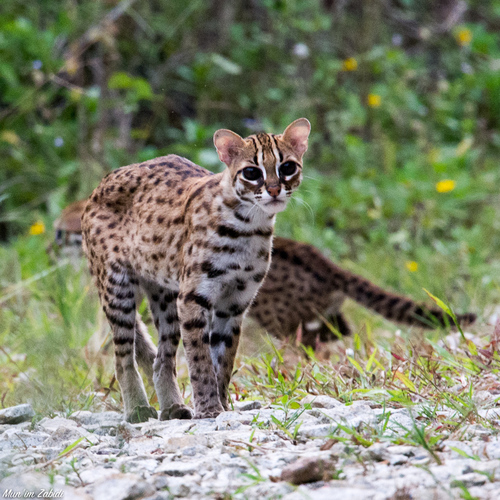
Leopard Cat
The leopard cat, Prionailurus bengalensis, features a sleek, spotted coat and thrives across Asia's diverse landscapes. This nocturnal predator plays a vital role in balancing ecosystems by controlling rodent populations. Its adaptability and striking appearance make it a fascinating subject for wildlife enthusiasts.
10-13 years
Lifespan
2.2 - 7.5 kg
Weight
Length: 46 - 65 cm
Size
Grey, Yellow, Black, White
Color
45 mph
Top Speed
Least Concern
Conservation Status
Stable
Population Trend
Characteristics
The leopard cat (Prionailurus bengalensis) is a small wild cat native to South and East Asia. It has a slender build, with a body length of up to 65 cm and a distinctive coat patterned with spots and stripes. Leopard cats are known for their adaptability to various habitats, including forests, grasslands, and agricultural areas. They primarily hunt small mammals and birds, often showing nocturnal behavior. These cats are solitary and territorial, marking their range with scent markings. They play a crucial role in controlling rodent populations in their native ecosystems.
Distribution Range of the Leopard Cat
Prionailurus bengalensis, commonly known as the leopard cat, is native to a broad region in Asia. Its geographical distribution spans several countries across the continent. It is found in parts of the Russian Far East, Korea, China, and Taiwan, extending southwards through the Indian subcontinent, Southeast Asia, including countries like Thailand, Vietnam, Malaysia, and Indonesia, and reaching the Philippines.
Leopard Cat's Habitat
Environmental Conditions
Leopard cats inhabit a variety of environments, but they predominantly prefer forested areas. They are commonly found in tropical and subtropical forests, including evergreen and deciduous forests, as well as in mangrove swamps and plantations. They can adapt to different altitudes, ranging from sea level to mountainous regions up to 3000 meters. The environmental conditions typically include a warm and humid climate, with ample cover and water sources.
Ecological Niche
Ecologically, the leopard cat is a versatile and opportunistic predator. It primarily feeds on small mammals, birds, and insects, utilizing its keen senses and adaptability to hunt in diverse habitats. The species plays a crucial role in controlling the population of rodents and other small animals, maintaining ecological balance within its native regions.
Copyright @ Nature Style Limited. All Rights Reserved.
 English
English